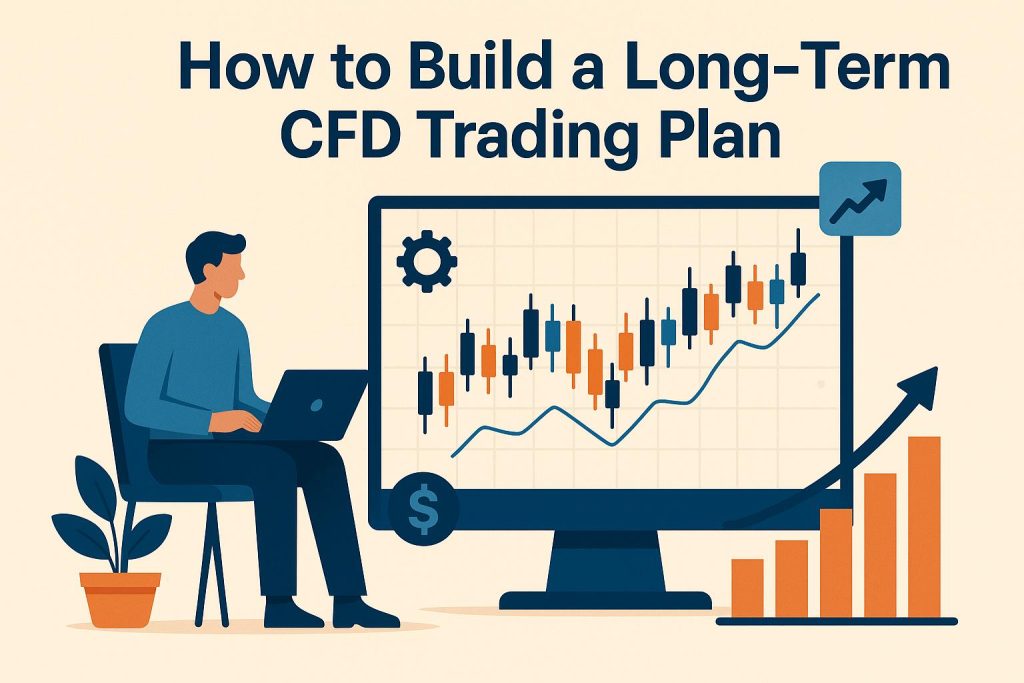Introduction to CFD Trading
Contract for Difference (CFD) trading represents a versatile and complex avenue for investors, allowing them to speculate on price movements of various financial assets without the need to possess the underlying asset. This distinctive characteristic enables investors to engage in a wide array of markets, spanning stocks, commodities, and foreign exchange. The essence of successful CFD trading lies in formulating a meticulous and well-structured trading plan, which serves as a guiding framework for decision-making. The sustainability and profitability of such a plan necessitate a deep understanding and continuous refinement of the fundamental components of CFD trading.
Understanding the Core Components of a CFD Trading Plan
Creating a comprehensive CFD trading plan involves synthesizing several critical components, each contributing uniquely to the overall blueprint of investment strategy. Central to this process is the identification of objectives, comprehension of risk tolerance, and the selection of an appropriate trading strategy.
Defining Trading Objectives
The initial step in formulating a CFD trading plan involves the precise delineation of financial goals and objectives. Traders must consider variables such as expected rates of return, investment time horizons, and specific financial milestones they aspire to achieve. Attainability and measurability are crucial characteristics of these objectives, as they not only guide trading activities but also provide benchmarks for performance evaluation.
Assessing Risk Tolerance
Understanding one’s risk tolerance is indispensable in the context of CFD trading. It denotes the degree of variability in returns that an investor is comfortable with. Assessing risk tolerance provides a foundation for decision-making processes, influencing the choice of assets to trade and strategies to employ. Knowing the level of risk one is willing to accept assists in maintaining emotional equilibrium during market fluctuations, thus fostering better decision-making.
Choosing an Appropriate Trading Strategy
The selection of a trading strategy is a pivotal component that necessitates a comprehensive analysis of the financial markets. Incorporating both technical and fundamental analysis, traders can make informed predictions on price movements. Various strategies, ranging from day trading, which involves short-term intraday trades, to swing trading and position trading, each with distinct rules and guidelines, empower traders to adapt to market conditions.
Incorporating Risk Management Techniques
The ability to effectively manage risk is intrinsic to achieving long-term success in CFD trading. Implementing robust risk management techniques serves not only to safeguard trading capital but also to mitigate potential losses, thus providing a cushion against market volatility.
Using Stop Loss and Take Profit Orders
Stop loss and take profit orders are indispensable tools in CFD trading that aid in strategic trade management. A stop loss order is designed to curtail potential losses by closing a position once a predetermined price threshold is breached. Conversely, a take profit order secures profits by closing a position when a target price is attained. These tools ensure disciplined trading practices, minimizing the psychological burden of manual decision-making under pressure.
Position Sizing
Strategic determination of position size is a fundamental risk management practice that involves calculating the monetary or percentage exposure a trader is willing to risk on a single position. Position sizing is inherently linked to one’s risk tolerance and account balance, as it ensures that no single trade has the potential to significantly impact the overall portfolio health.
Developing a Routine and Sticking to It
Adopting a consistent routine is crucial for the establishment and execution of a successful CFD trading plan. A routine encompassing regular market analysis, disciplined trade execution, and thorough performance review aids in maintaining focus and discipline.
Daily and Weekly Analysis
Regular market analysis is a cornerstone of informed trading. Conducting daily and weekly reviews not only keeps traders attuned to prevailing market trends and developments but also aids in anticipating potential price movements. Analyzing economic indicators and news events, which may influence market sentiments, forms an integral part of this analytical process.
Evaluating Trade Performance
Periodic evaluation of trade performance is imperative for identifying the efficacy of a trading plan. Such evaluations involve reviewing closed trades to pinpoint strategic strengths and weaknesses. By assessing the effectiveness of employed strategies and making adjustments where necessary, traders can hone their approaches and improve future trading decisions.
Continuously Educate Yourself
The financial markets are dynamic, necessitating continuous education and skill development. Traders who remain abreast of market innovations and evolving strategies are better equipped to recalibrate their approaches to align with changing market conditions.
Learning from Mistakes
Mistakes in trading offer valuable learning opportunities. Maintaining a trading journal to document both successes and failures provides insights that are instrumental for future improvement. By acknowledging and analyzing past mistakes, traders can refine their strategies and build resilience against repeating the same errors.
Resources for Learning
A plethora of resources are available for those eager to expand their trading acumen. Online courses, webinars, and financial news portals offer a wealth of information tailored to various aspects of CFD trading. Utilizing these resources, alongside comprehensive financial education platforms, can substantially enhance a trader’s understanding and strategic somatic techniques.
Conclusion
Developing a comprehensive and long-term CFD trading plan demands intricate attention to interconnected elements such as setting precise objectives, understanding risk tolerance, and implementing effective risk management methodologies. Consistency, discipline, and education remain foundational principles that drive success in the unpredictable domain of CFD trading. By adhering to these tenets and continually refining strategies, traders can navigate the dynamic landscape of the financial markets with increased confidence and potential for profitability.
This article was last updated on: October 17, 2025







